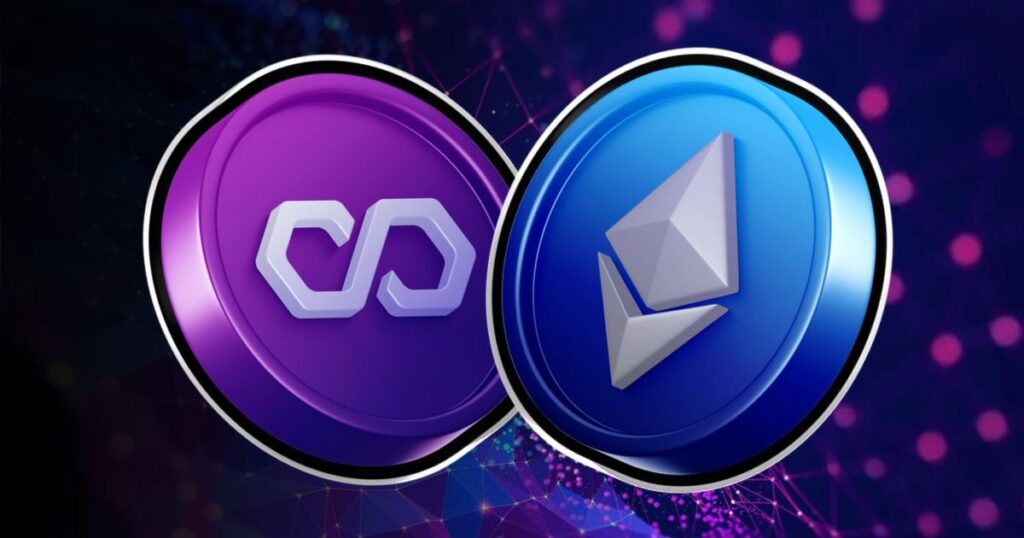In today’s rapidly evolving digital landscape, blockchain technology has gained immense popularity, revolutionizing various industries and paving the way for decentralized systems. Among the numerous blockchain platforms available, Ethereum has emerged as a frontrunner, offering a robust infrastructure for building decentralized applications (dApps) and executing smart contracts. However, as Ethereum’s popularity soared, so did its scalability challenges. Enter Polygon, an innovative solution. Visit immediaterevolution.com if you are planning to trade Bitcoin.
Introducing Polygon: Enhancing Ethereum’s Scalability
Polygon, formerly recognized as Matic Network, is a pioneering Layer 2 scaling solution developed to overcome the scalability challenges faced by Ethereum. This innovative platform operates as an extension of the Ethereum network, offering expedited and economically efficient transactions while upholding robust security measures. By harnessing the power of Layer 2 technology, Polygon establishes a robust infrastructure for the creation and execution of scalable decentralized applications (dApps), facilitating seamless integration with the Ethereum mainnet.
Polygon is designed to address Ethereum’s scalability limitations, which have become more apparent as the network’s popularity and usage have grown. Ethereum’s native network imposes constraints on transaction throughput and fees, resulting in slower processing times and higher costs during periods of network congestion. Recognizing these challenges, Polygon serves as a practical solution that augments Ethereum’s capabilities, enabling enhanced scalability without compromising the underlying security provided by Ethereum’s mainnet.
Through its Layer 2 framework, Polygon implements various scaling techniques, such as sidechains and plasma chains, to alleviate the strain on the Ethereum mainnet. By offloading transactions and computation onto these Layer 2 chains, Polygon significantly enhances transaction speed and reduces costs, making it a more accessible and user-friendly environment for developers and users alike.
Moreover, Polygon ensures seamless interoperability with the Ethereum mainnet, allowing dApps built on Polygon to seamlessly interact with existing Ethereum-based applications and smart contracts. This compatibility fosters an ecosystem where developers can leverage the existing infrastructure and user base of Ethereum while harnessing the benefits of Polygon’s scalability enhancements.
The versatility of Polygon’s platform extends beyond scaling solutions. It also provides developers with a wide range of tools, such as software development kits (SDKs) and APIs, to simplify the creation and deployment of dApps. These resources empower developers to build highly performant and scalable applications with ease, accelerating the adoption of blockchain technology across various industries.
How Polygon Works: A Layer 2 Solution
Polygon operates as a Layer 2 solution, which means it functions as an additional layer on top of the Ethereum mainnet. This layer serves as a scaling solution by processing transactions off-chain, thereby reducing the burden on the Ethereum network. Polygon achieves this through two main components: the Polygon PoS Chain and the Polygon Bridge.
Polygon PoS Chain: Fast and Efficient
The Polygon PoS (Proof-of-Stake) Chain is a standalone blockchain that operates independently while remaining connected to the Ethereum mainnet. This chain employs a Proof-of-Stake consensus mechanism, enabling faster block confirmations and significantly reducing transaction fees. By shifting the majority of transactions to the PoS Chain, Polygon ensures a highly scalable environment for dApps, attracting developers and users seeking efficiency and affordability.
Polygon Bridge: Seamless Interoperability
Interoperability is a crucial aspect of any blockchain solution, and Polygon excels in this regard. The Polygon Bridge acts as a secure and seamless link between the Ethereum mainnet and the Polygon PoS Chain, facilitating the transfer of assets and data across both networks. This bridge ensures that users can seamlessly interact with decentralized applications and transfer tokens between the Ethereum network and Polygon’s Layer 2 solution.
Benefits of Polygon: Unlocking Mass Adoption
The introduction of Polygon has brought forth numerous benefits for both developers and end-users, fostering the mass adoption of decentralized applications and the Ethereum ecosystem as a whole. Let’s explore some of the key advantages of leveraging Polygon:
- Scalability: Polygon addresses Ethereum’s scalability limitations, allowing for faster and more efficient transactions. This improvement in throughput enables developers to build complex applications without worrying about network congestion.
- Cost-Effectiveness: By moving transactions to the Polygon PoS Chain, users can enjoy reduced fees, making it economically viable for small transactions. This affordability attracts users and encourages widespread adoption of dApps built on the Polygon network.
- Enhanced User Experience: With faster transaction confirmations and lower fees, Polygon significantly improves the overall user experience. This improved usability plays a vital role in driving user adoption and engagement.
- Interoperability: Polygon’s seamless integration with the Ethereum mainnet ensures compatibility with existing Ethereum tools, wallets, and dApps. Developers can easily migrate their projects to Polygon, providing a seamless experience for their users.
- Eco-Friendly: As a Layer 2 scaling solution, Polygon reduces the carbon footprint associated with Ethereum’s Proof-of-Work consensus mechanism. By utilizing Proof-of-Stake, Polygon promotes a more energy-efficient and sustainable blockchain ecosystem.
Conclusion: Unlocking the Potential of Ethereum
In conclusion, Polygon has emerged as a powerful Layer 2 scaling solution that addresses the scalability limitations of Ethereum. With its efficient PoS Chain and seamless interoperability through the Polygon Bridge, Polygon offers developers a scalable environment for building decentralized applications and users a faster, more cost-effective, and more user-friendly experience. By unlocking the potential of Ethereum and fostering mass adoption, Polygon plays a crucial role in revolutionizing the blockchain landscape and paving the way for a decentralized future.
